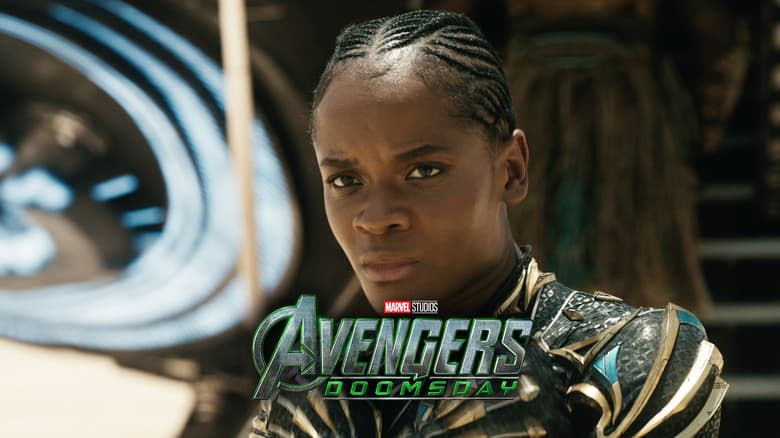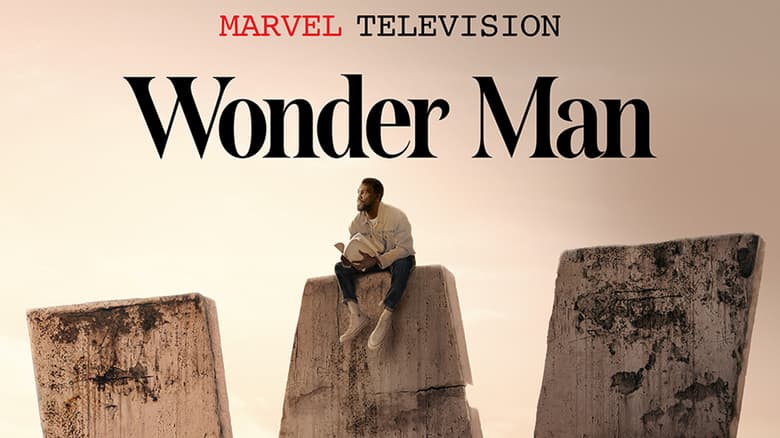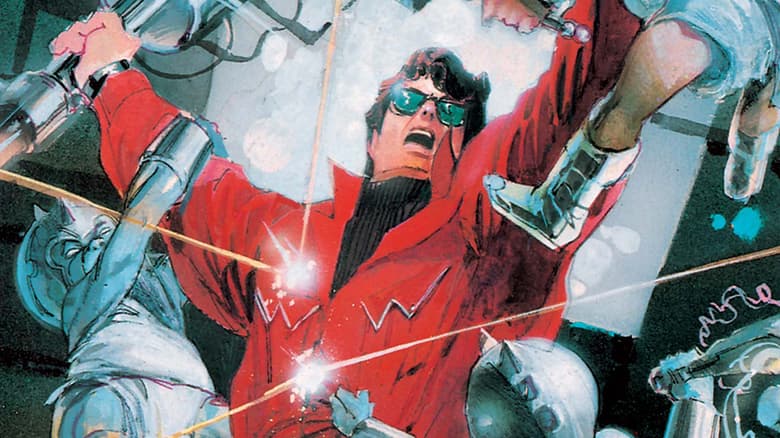Fabian Nicieza and Alex Segura’s Comics History
The writers talk about their Marvel backstories and their own work in anthology one-shot ‘Marvel’s Voices: Comunidades.’
This year’s MARVEL’S VOICES: COMUNIDADES one-shot highlighting Latin and Latinx creators and characters boasts an incredible roster of talents, both established and brand new. Before reading “Comunidades,” we took the opportunity to speak to two of the writers in question, legendary scribe Fabian Nicieza and novelist plus relative newcomer to comics Alex Segura, about their experiences with one another and their connection to the one-shot.
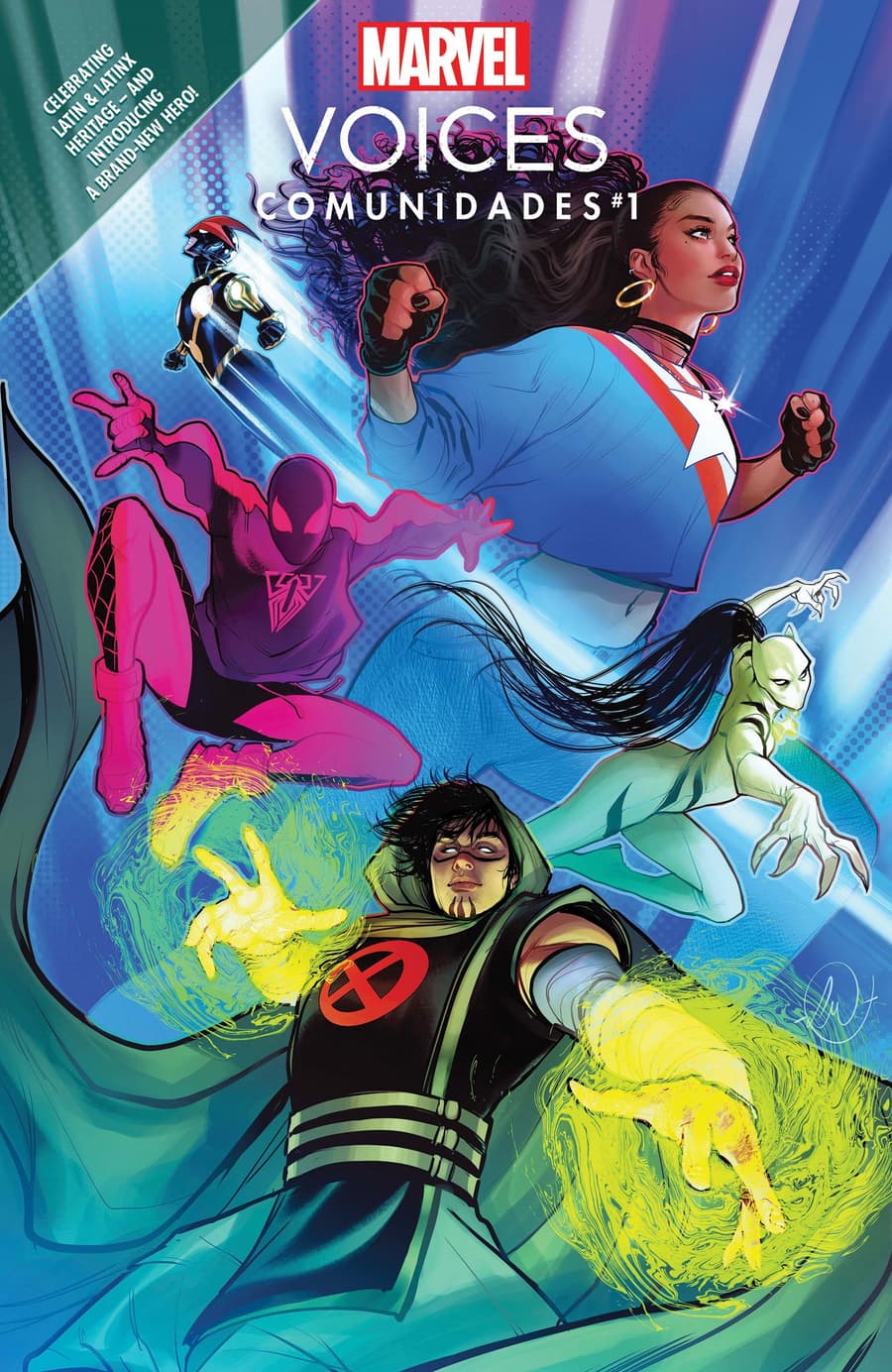
Do you guys remember the first time you met?
ALEX SEGURA: I knew Fabian’s work as a reader first. NEW WARRIORS (1990) and then I was an X-MEN (1991) kid–I was a fan. I’m sure we met at a convention, probably when I was working at DC and he was doing work there. [I was] a publicity person there, many emails were exchanged, and that’s how we became pals!
FABIAN NICIEZA: Yep, we met through the work we were both doing at DC and I’m pretty sure the first time we met face-to-face was at the DC booth at a convention. We’ve worn very similar hats. We’ve both done publicity and we’ve both been part of editorial. We’ve both been editor-in-chief types and we’ve both done freelance writing in comics and novels.
ALEX SEGURA: Are we the same person? [Laughs]
FABIAN NICIEZA: We have very parallel career paths! Unfortunately you’re looking at your future! [Laughs]
Alex, do you remember what first stood out about Fabian’s work that made you a fan?
ALEX SEGURA: [Fabian’s work] was always strong with character, but he didn’t shy away from action. What I liked about X-MEN, which is where I really connected most to Fabian’s work as a fan, was that he really knew the characters and didn’t just break them to break them. He put his stamp on but respected what came before. All the twists came from character. As a mystery writer, you never want to shortchange the reader, and I never felt shortchanged. I never felt like he threw in a twist just to get me to buy the next issue, it always felt earned. It may sound very workmanlike, but it’s meant to be high praise, because not a lot of writers do that.
FABIAN NICIEZA: I appreciate that, Alex. I thought the answer was going to be “his ridiculous plot convolutions.”
ALEX SEGURA: Kwannon!

Fabian, who were the writers you patterned yourself after, as a fan and creator?
FABIAN NICIEZA: In comics it’s basically the ones I grew up reading. Like most of us, I think my seminal influences came from when I was between the ages of 12 and 16. That’s really when we’re formulating what we like about story and about character. For me it’s probably Steve Englehart and Jim Shooter on AVENGERS, who I both think did really strong, excellent Super Hero work. I grew up reading Stan Lee and Roy Thomas. Roy Thomas on CONAN THE BARBARIAN (1970) is where I started seeing story and character differently, because I never thought I’d be attracted to a character like Conan, but I was—and of course the Barry Windsor-Smith art didn’t hurt! And then I gravitated towards what Jim Starlin was doing in the 70’s because it blew my 11-year-old mind.
I found as I got older I gravitated towards the type of writer I think I ultimately became, which I think was a strong, workmanlike, professional writer. I always joke that I think I’m a mediocre writer, but with the caveat that I’m excellent in my mediocrity. [Alex laughs] I just keep typing—that’s how I’ve always approached it.
ALEX SEGURA: There’s a lot to be said for showing up. I don’t agree that you’re mediocre, but I think there’s a lot to be said in a writing capacity for showing up, doing the work, meeting the deadline, and doing it in a professional way.
FABIAN NICIEZA: I learned that in the office environment being surrounded by fellow editors and writers. Whether an editor who also wrote was a favorite of mine or not, they always had a very strong professional approach. The kind of work Alex has done in book publishing is the kind I respect tremendously. He puts in the work. A lot of writers and even editors don’t understand how hard it is to put in the work all the time.
ALEX SEGURA: It’s a craft.
FABIAN NICIEZA: It helps that every single story I read from [Alex] is entertaining and enjoyable. I don’t know that we’re going to win prestigious awards, but we have an audience who appreciates what we do. To me that ends up being the epitaph on the tombstone: “He wrote stuff that people liked.”
ALEX SEGURA: What I pull from Fabian’s work is that it always delivers. But I follow the same rules. I’m here to entertain myself first because then I’ll put in the work. That’s the secret: entertain yourself, hopefully entertain your editor, then entertain the artist and it’s a domino effect. [My latest novel] Secret Identity is the murder mystery I wanted to read. Thankfully other people wanted to read it too. What got me through the writing was that I was having fun and wanted to find out what happened next.
How did you both become involved in this round of MARVEL’S VOICES: COMUNIDADES?
FABIAN NICIEZA: [Laughs] The process was editors Lauren Amaro and Sarah Brunstad asking me if I’d like to be a part of it a year ago and me turning it down due to a combination of scheduling and not really feeling like I belonged in the book. But they asked enough times that I said yes, especially after they told me that Nova was available and I could write a Nova story with Sam Alexander, who I like a lot. I mean, I’m a Rich Rider guy, but I still like Sam Alexander a lot. Their persistence and the right character being available made me say I’d do it. [Then,] as I was writing it, they told me Paco Medina was available to draw it, which just made me write bigger because I know what Paco can do, he’s an excellent artist who has already done great work on Nova.
ALEX SEGURA: I did a Sunspot story in last year’s COMUNIDADES collection which was actually my first Marvel work. Lauren and Sarah had reached out and it had been a really fun experience. I got to weave a little story into Sunspot’s origin from MARVEL GRAPHIC NOVEL #4, hearkening back to the Chris Claremont stuff but also using some of the current Krakoa stuff. Like Fabian said, there’s an inherent challenge working with such little space. I like the idea of having to create a vignette that fits this story structure. That was really fun.
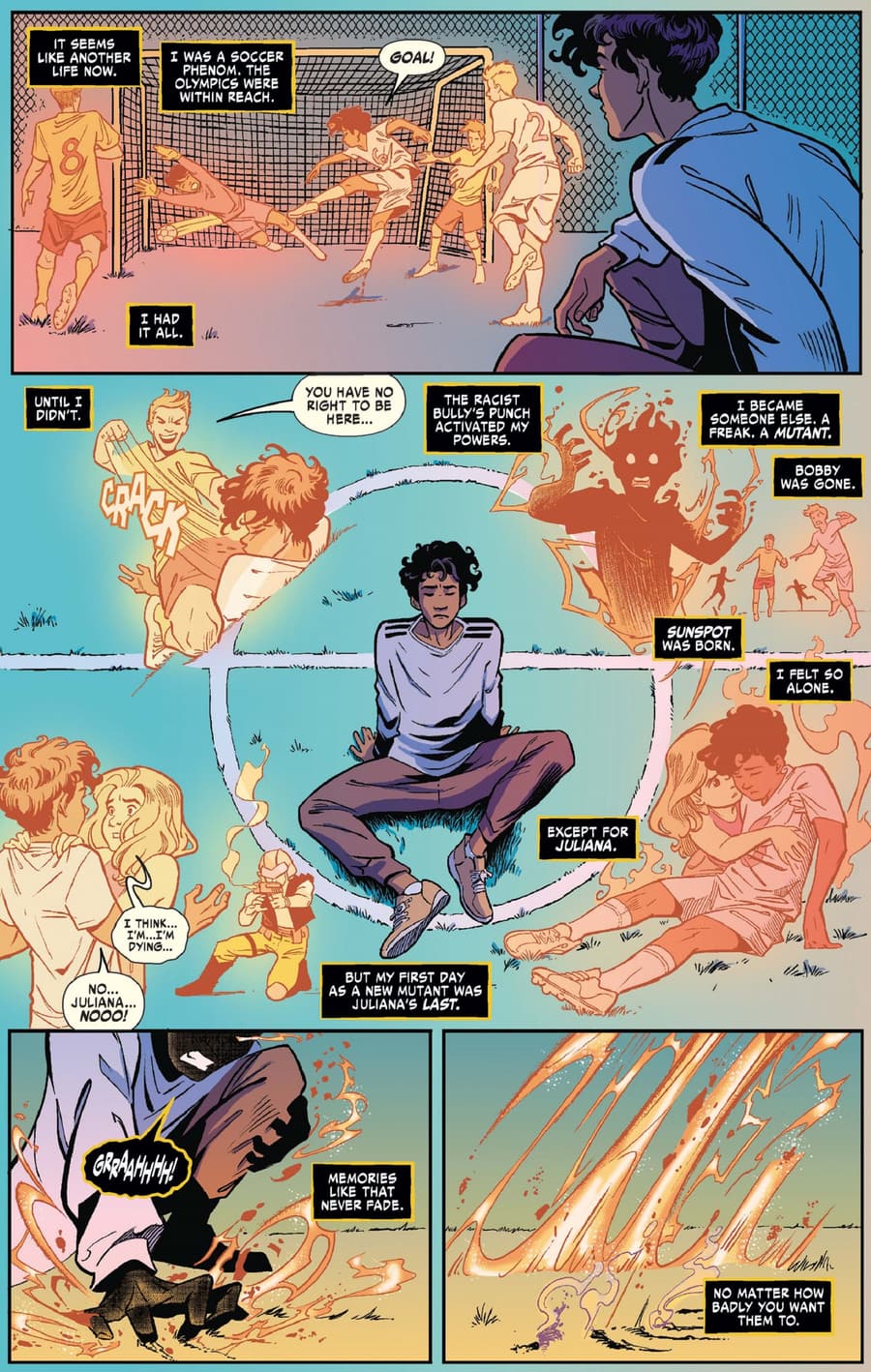
This year Lauren reached out again and also asked if I’d be interested in creating a new character. We brainstormed about who Chimera could be and how she fit into White Tiger: Aya Ayala’s story. That’s the dream! I remember picking up SPIDER-MAN 2099 [from 1992] and seeing Miguel O’Hara who was a Hispanic guy like me. I was a huge Spider-Man fan, I still am, so seeing a Latinx Spider-Man made me realize it was possible, and I think that identification is really important. So being asked to introduce a new Latinx character into the Marvel Universe–I couldn’t say no.
Then they brought in Roge Antonio, who is just fantastic. And Paco [Medina] did the designs for Chimera, so they’re really fantastic. It’s wild. It’s been a trip.
What makes projects like MARVEL’S VOICES: COMUNIDADES important?
ALEX SEGURA: I think it’s important to diversify the people contributing to the medium. It’s about elevating voices that may not have gotten the opportunity, it’s not an either/or thing. Not to harp on the title, but it’s adding voices to the choir of people creating in this space. It also showcases the characters, not just the talent. Marvel has this huge library of Latinx characters, of queer characters, of so many different types of characters. It’s great to see them spotlighted in such a meaningful way, and with regularity, it’s not just a thing they did once and then that’s it. It’s impressive.
FABIAN NICIEZA: [These books] are perfectly made to spotlight characters who maybe can’t carry their own book or haven’t carried their own book recently. They also mix the talent with established professionals and new people. It’s no different from what MARVEL COMICS PRESENTS was in the late 80s and early 90s. MARVEL PREMIERE and MARVEL SPOTLIGHT in the 70s had rotating characters, rotating creative teams, and a lot of new talent getting a chance.
Alex, can you tell us a little bit more about your individual story in COMUNIDADES?
ALEX SEGURA: I don’t want to give too much away, but it sets up a new status quo for Ava, who has had a pretty rocky tenure as White Tiger. She had a great little run in AVENGERS ACADEMY and then was spotlighted in the last COMUNIDADES collection, if I’m not mistaken. It sets up a new status quo for her and, hopefully, a new big bad if we’re able to do more down the line. They fight an established street-level Marvel villain, but there’s also something much deeper going on. There’s a larger mystery to unfurl if we get there, but I think it also stands alone as a fun romp.
Alex, spell Chimera for me.
ALEX SEGURA: C-h-i-m-e-r-a.
Ok, so the “normal” way, I was just making sure.
FABIAN NICIEZA: Not the “Fabian” way! [Laughs]
You knew where I was going!
FABIAN NICIEZA: I made Namorita into Kymaera in NEW WARRIORS. But there was a reason it was spelled that way! I just don’t remember what it is. [All laugh]
It was the 90s, things were crazy. Fabian, what drew you to do a story with Sam Alexander as Nova?
FABIAN NICIEZA: I was well aware they were doing a new Nova when Jeph Loeb and Ed McGuinness introduced Sam Alexander. I didn’t read it at the time, but both Jeph and Ed are tremendous, so I knew at least it would be a good book. I had also read all the stuff that had been done with Rich Rider in ANNIHILATION and in NOVA (2007) by Dan Abnett and Andy Lanning and just thought it was A+ Super Hero stuff. I felt like a new version was being done after the previous version had been given his greatest hurrah.
Sam is a good kid and he’s fun to write. In some ways the rawness of Sam’s youth plays even better than Rich Rider at this point who has seen so much. That sense of discovery for a Nova I think is essential to the character, going back to when Marv Wolfman created him. You have somebody discovering the greater things out there, and in the process discovering themselves. Rich has literally been through the wars; with Sam, he’s still discovering, and that’s fun.
What can you say about your story, Fabian?
FABIAN NICIEZA: Sam is investigating a distress call and traveling to a region of space that is territorially secluded from the Nova Corps–even though as I was writing it I found out there is no more Nova Corps. [Laughs] Sam encounters an isolationist society not very amenable to immigrants coming in as well as a group of refugees from a war zone being denied access to this safe area. Nova gets in the middle of all that and tries to bridge the gap between the two parties.
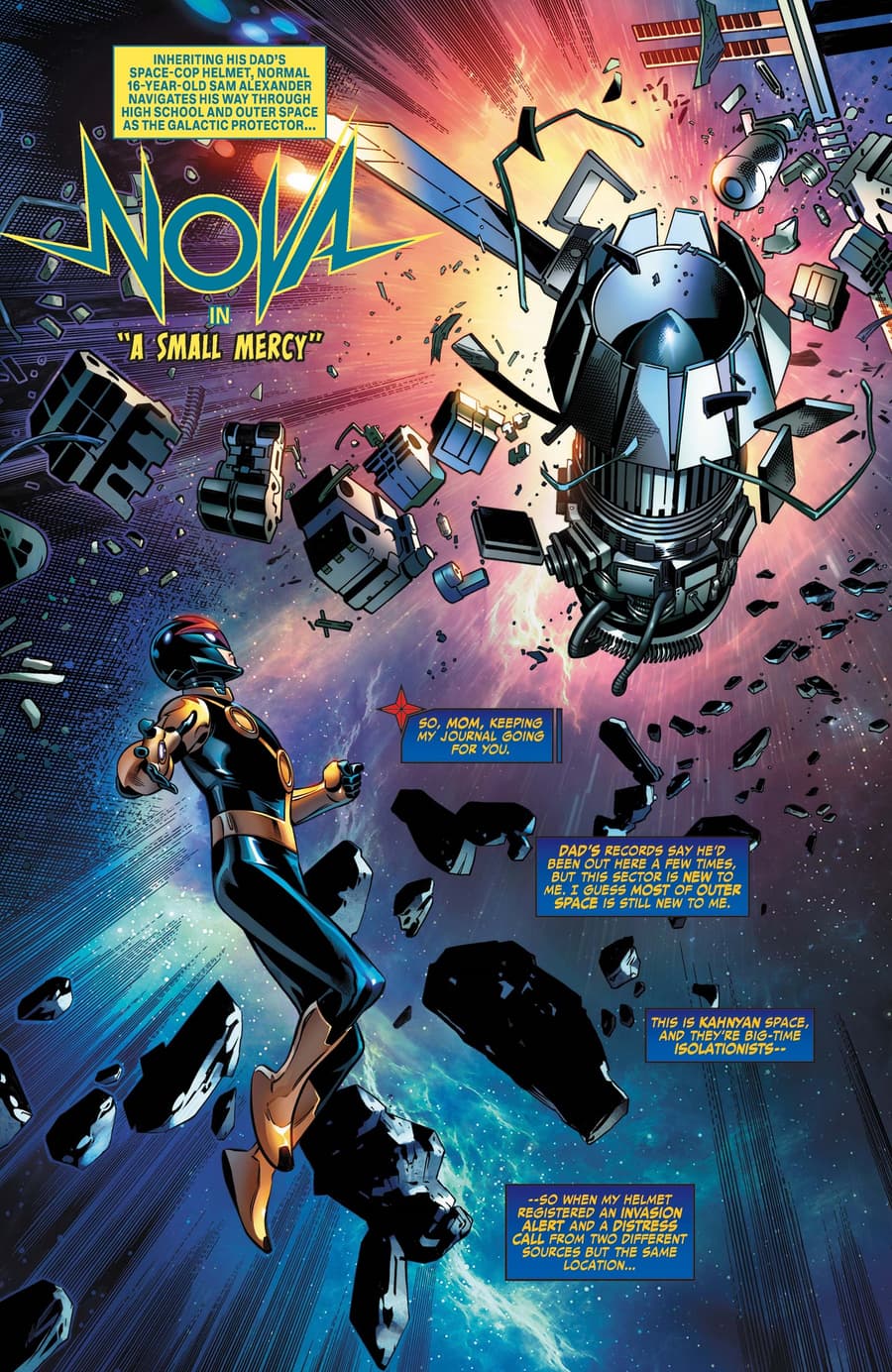
What’s your take on the status of Latin American culture in comics today as compared to in the past?
FABIAN NICIEZA: I just did a really interesting interview for the Marvel’s Voices podcast with Angélique Roché a couple weeks ago, and I wanted to make sure it wasn’t combative between the perspective people of a certain age have today versus the reality of the day-to-day and what it always was. There was never in my office days a systemic disinterest in people of color working on the books. You hired people who could do the work, who could get it in on time, whose stuff sold.
I saw some editors who did have prejudices, but many others who did not. I saw creators who wanted to diversify the makeup of characters in their books—one of those books was NEW WARRIORS (1990), where we purposely tried to make it reflect a better view of what walking down the street in Manhattan really looked like at the time. The reality is that the digital age and social media has expanded our view of who we can hire to work on these things.
ALEX SEGURA: We’ve made a lot of strides. But there’s still room for improvement. The path to publication is hard for anybody. You have to put in the work, but you have to be given opportunity, and I think we’re seeing more opportunities for creators of color and marginalized voices. That’s a good thing, but it can always be better.
This year’s MARVEL’S VOICES: COMUNIDADES, featuring stories from Fabian Nicieza, Alex Segura and many more, is available now in print and digital comic shops.
The Daily Bugle
Can’t-miss news and updates from across the Marvel Universe!
